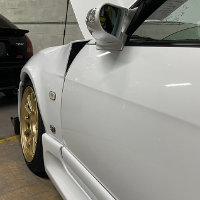R33 Sii - My Gt30 Upgrade Is Done. Lots Of Pics
Announcements
-
Similar Content
-
Latest Posts
-
On my platform, lpfp, Hpfp, injectors, Flex fuel kit..
-
Hi Fred, Are you still on here, I'm looking for 4 of these rims?
-
Looking back, I’m pretty sure I over-torqued the magnetic drain plug because I was trying to fully crush the copper washer. In hindsight, I definitely should’ve used a torque wrench. Either way, I ended up switching to a regular drain plug so I don’t have to deal with this kind of issue again. Big thanks to everyone on the forum for your support—I actually talk about you guys to my friends and coworkers
-
Curious to why you're not getting Jesse to do the exhaust, seeing that he has just done 2 GTRs with Aes valves.
-
By Murray_Calavera · Posted
What extra parts are you thinking you'll need to run e85 compared to e30?
-






Recommended Posts
Create an account or sign in to comment
You need to be a member in order to leave a comment
Create an account
Sign up for a new account in our community. It's easy!
Register a new accountSign in
Already have an account? Sign in here.
Sign In Now